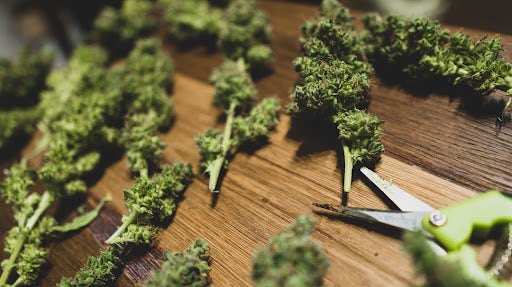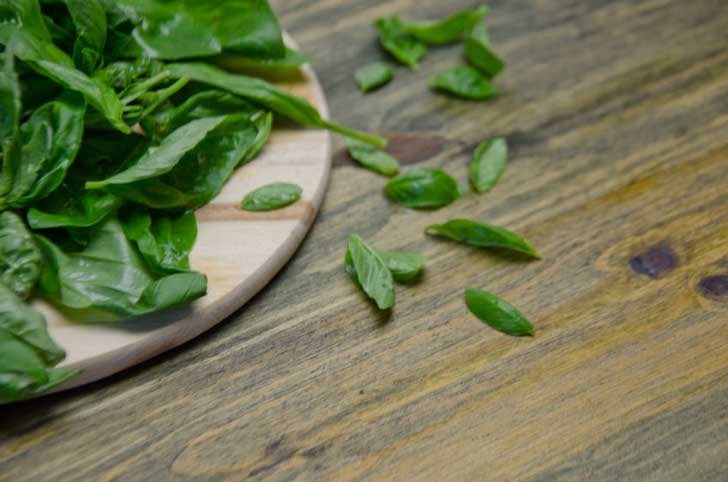After harvest, cannabis needs to be dried and cured before it is ready to consume. Drying typically occurs first, followed by bucking (to remove flower from the stem) and trimming (to remove the remaining leaves). The last step in the post-harvest process is curing.
Curing cannabis is a technique that aims to remove and degrade harsh and unwanted substances from harvested buds, allowing the flavors to develop and the smoke or vapor to become smoother. 1 It is even believed that curing can increase potency. 2
The most popular form of curing is a simple technique that consists of placing harvested buds in mason jars (or a sealed container) and airing them out regularly (aka burping), and simply waiting. The process usually takes about 14 days, but can be extended by choice. Some home growers will cure flower for many months to allow flavor profiles to mature and change over time. 3
Another lesser-known technique is curing cannabis in water, known as “water curing.” As the name suggests, water curing cannabis requires the use of water instead of air. Many unwanted substances and compounds found in cannabis are water-soluble, which means you can cure your weed by immersing the buds in water-filled jars and changing the water daily. Curing marijuana in water is also faster than air curing. Water curing cannabis can take 5-10 days (depending on the quality of the buds). On the other hand, air curing takes between two weeks and a couple months for the best results.
Water curing weed guide: how does it work?
Curing cannabis in water allows undesirable compounds such as chlorophyll, carbohydrates, proteins, and salts to be slowly removed. Since THC, CBD, and other cannabinoids are fat-soluble and hydrophobic, water curing should have very limited any impact on them in the final product. 4
Unlike cannabinoids and the most common terpenes, some terpene-like compounds (also called terpenoids) and flavonoids are in fact water-soluble. The process of water curing helps remove these and allow for a smoother smoking experience. However as a result, water curing cannabis will also remove some of the taste and smell, which is preserved when air curing. 5
What are the pros and cons of curing cannabis in water?
Both air and water curing cannabis will significantly improve the quality of your final product. However, one is not necessarily better than the other. Instead, the best curing technique is the one that meets your needs and elevates your user experience.
Pros
- Water curing cannabis is simple and requires minimal equipment
- The process is quick as it usually takes between 5 and 10 days
- Curing weed in water results in a smoother smoking experience
- The smell and taste are less noticeable, making it a great ingredient for edibles and topicals
Cons
- The bag appeal decreases significantly as water cured buds lose some of their vibrant colors and may look slightly washed out
- Some terpenes or other flavors and smells will be lost in the process
- Though water curing is faster than air curing, a decrease in taste and smell might not be worth it for some
- A significant risk of mold during the drying step
A guide to water curing cannabis
The equipment required for water curing cannabis is pretty basic. All you need is:
- Freshly harvested, trimmed cannabis buds
- Distilled water
- Containers with lids (ideally mason jars)
- Tin foil (optional)
When preparing to cure cannabis in water, ensure that your buds are perfectly trimmed. The flowers should be uniform and well manicured, as it will be harder to improve the appearance after curing.
Put the trimmed buds in clean mason jars and add distilled water. Do not pack the jars to the rim. A good rule of thumb is to fill your jars two-thirds full of flower.
The buds must be fully submerged in water at all times. It is very important your buds do not float! Placing the jars upside down might solve the problem, but only if the lids are screwed on tightly. If you struggle to keep your weed submerged in water, tin foil might help. Try pushing the buds down to the bottom of the jar and placing a piece of tin foil firmly above them. This should prevent your buds from floating.
The water from the jars needs to be replaced daily with fresh, distilled water until the water is clean. Make sure the buds are, once again, fully submerged when you replace the water. Remember, the dirtier the weed, the longer it will take to complete the process.
How to dry weed after water curing
Once the curing process is done, it’s time to dry your cured cannabis. You can let the buds air dry by placing them on paper towels or on a drying rack. Remember to turn them regularly to ensure all sides get dry and avoid mold growth.
Alternatively, you can use a food-dehumidifier for faster results.
Before water curing your weed buds, make sure they are not moldy! Curing cannabis in water does not remove mold. In fact, the high moisture creates an environment that mold can thrive in, so always check your harvested buds before you start using them.
Is water curing cannabis the same as bud washing or the ice water hash extraction process?
Water curing cannabis is not the same as bud washing or water extraction
The goal of bud washing is to remove any dirt, dust, mites, eggs, soil, and pesticide residue from freshly harvested cannabis. Think of washing vegetables and fruit with water before eating them.
Bud washing involves briefly submerging harvested buds in room temperature water, mixed with other ingredients (such as baking soda or lemon juice), and then letting them dry. Remember that bud washing does not remove mold and will also increase overall drying time. Still, it has been reported to help improve the buds’ taste and overall quality.
The ice water hash extraction process is that in which cannabis is submerged in ice-cold water to produce high-quality bubble hash. This process hardens and breaks off the trichomes from the rest of the cannabis plant. In addition, the cold process is gentle on terpenes and flavonoids, making it possible to produce hash that is full of flavor.
The purpose of water curing is different. This technique is used to make sure the buds are of better quality than when consumed straight after being cut from the plant. The final product is perfect for discrete use and is excellent for making edibles and topicals, as the process removes a lot of the taste and smell.
Water curing is not for everybody, but if you want to cut down on your curing time or would like your weed to have less flavor but smoke a bit smoother, this could be the process for you.
Sources
- Green G., Kryptonite S., Chimera B., Ralpheme R. (2001). Harvesting and Curing Your Bud in the Cannabis Grow Bible. Green Candy Press; San Francisco, CA, USA: 2001.
- Lazarjani MP, Young O, Kebede L, Seyfoddin A. Processing and extraction methods of medicinal cannabis: a narrative review. J Cannabis Res. 2021;3(1):32. Published 2021 Jul 19. doi:10.1186/s42238-021-00087-9
- Lazarjani MP, Young O, Kebede L, Seyfoddin A. Processing and extraction methods of medicinal cannabis: a narrative review. J Cannabis Res. 2021;3(1):32. Published 2021 Jul 19. doi:10.1186/s42238-021-00087-9
- Sharma, P., Murthy, P., & Bharath, M. M. S. (2012). Chemistry, metabolism, and toxicology of cannabis: Clinical implications. Iranian journal of psychiatry. Retrieved from https://www.ncbi.nlm.nih.gov/pmc/articles/PMC3570572/
- Martins, M. A. R., Silva, L. P., Ferreira, O., Schröder, B., Coutinho, J. A. P., & Pinho, S. P. (2017, June 27). Terpenes solubility in water and their environmental distribution. Journal of Molecular Liquids. Retrieved from
Sign up for bi-weekly updates, packed full of cannabis education, recipes, and tips. Your inbox will love it.

 Shop
Shop Support
Support


















